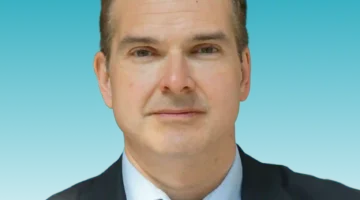 Hindsight is 20/20, and we often walk away from speeches or presentations thinking about what we could do differently. While you can’t turn back the clock, there is another way to benefit from this reflection: watching recordings of your speeches. Whenever possible, make sure you record your speeches or presentations. You can enhance your public speaking skills drastically by watching your recording and identifying ways to improve in areas that went poorly.
Hindsight is 20/20, and we often walk away from speeches or presentations thinking about what we could do differently. While you can’t turn back the clock, there is another way to benefit from this reflection: watching recordings of your speeches. Whenever possible, make sure you record your speeches or presentations. You can enhance your public speaking skills drastically by watching your recording and identifying ways to improve in areas that went poorly.
What to Watch For
While watching yourself, it can be hard to get over the initial awkwardness of seeing yourself on screen. It can benefit your analysis to focus on a few specific areas. If the video is relatively short, you can also watch it multiple times, focusing on a different area of improvement each time.

The Trump Gold Card: A New $1 Million Pathway To A U.S. Green Card
A new proposal would let wealthy foreign nationals secure an opportunity for a U.S. green card with a $1 million 'gift' to the government, sparking legal and ethical debate.
Note any awkward verbal stalls, like “um” and “like.” Notice your body language — were you swaying, leaning against the podium, or inclining more on a leg? Were you making eye contact with the listeners? Were you smiling? Were you speaking clearly all the way through?
Focus on your gestures. Did they seem natural or constrained? Ensure that individuals can notice them, particularly if you’re behind the podium.
Finally, take note of how you took care of interferences, for example, a sniffle or an inquiry that you weren’t set up for. Did you respond with annoyance, surprise, or pause? Assuming this is the case, work on managing interferences like these with a smooth response, so that you are even better the next time.
If all went well, you can use these footages for your demo videos as well as a marketing campaign to promote yourself as a public speaker!

Introducing LexisNexis Protégé™ in Lex Machina®
Lex Machina harnesses generative AI capabilities to revolutionize the way legal professionals interact with data to improve bottom line for their business.
How to Record
To learn from your recorded speeches and presentations, you need to first make sure you have a copy of the recording. Make sure you confirm whether the speech will be recorded ahead of time, so you are not disappointed.
Videographers will often give you a copied DVD of speech. However, this format is simply not good for editing because the original recording is compressed in the process of formatting the DVD. This decreases the size of the file to fit on a formatted DVD so you can send it faster and easier to someone. However, if you are interested in using part of the speech in a demo reel or social media post, it is something to be taken into consideration.
What are the alternatives? All things considered, request your videographer to get the raw footage and just drag and drop the files into an external hard disk or thumb drive. Make sure the files are not compressed. This way, your speech video quality will be far better than a compressed and formatted DVD or DropBox upload.
PowerPoint slides are another issue. Most people complain about slides that occur sporadically all through the footage. They have probably been edited into the speech video after recording or filming your speech. It can be difficult to edit your targeted message or content around the slides. It’s best to add slides in later — another reason high-quality, non-compressed raw footage files are important.
Help others help you. Always carry two or three 64 GB thumb drives with you so the producers and videographer will be able to format the files to the preferred format for MAC or PC. And always communicate that you are willing to come pick up the thumb drives or pay for them to be mailed. It is well worth your time and effort.
It may seem a bit strange to watch and re-watch your own speech and presentation footage, but it’s a well-known way to learn and improve. Dancers, athletes, and other performers review footage all the time. From making sure you get the right footage to knowing what to look for on the tape, reviewing recordings of your speeches is an important way to grow as a public speaker.
 Olga V. Mack is a blockchain strategist, public speaker, and adjunct professor at Berkeley Law. She is Vice President of Strategy at Quantstamp, the first decentralized security auditing blockchain platform. Most recently, she served as General Counsel at ClearSlide and she has held legal and operational roles at Visa, Zoosk, Pacific Art League, Wilson Sonsini, and Yahoo. Olga founded the Women Serve on Boards movement that advocates for women to serve on the corporate boards of Fortune 500 companies. You can email Olga at olga@olgamack.com or follow her on Twitter @olgavmack.
Olga V. Mack is a blockchain strategist, public speaker, and adjunct professor at Berkeley Law. She is Vice President of Strategy at Quantstamp, the first decentralized security auditing blockchain platform. Most recently, she served as General Counsel at ClearSlide and she has held legal and operational roles at Visa, Zoosk, Pacific Art League, Wilson Sonsini, and Yahoo. Olga founded the Women Serve on Boards movement that advocates for women to serve on the corporate boards of Fortune 500 companies. You can email Olga at olga@olgamack.com or follow her on Twitter @olgavmack.